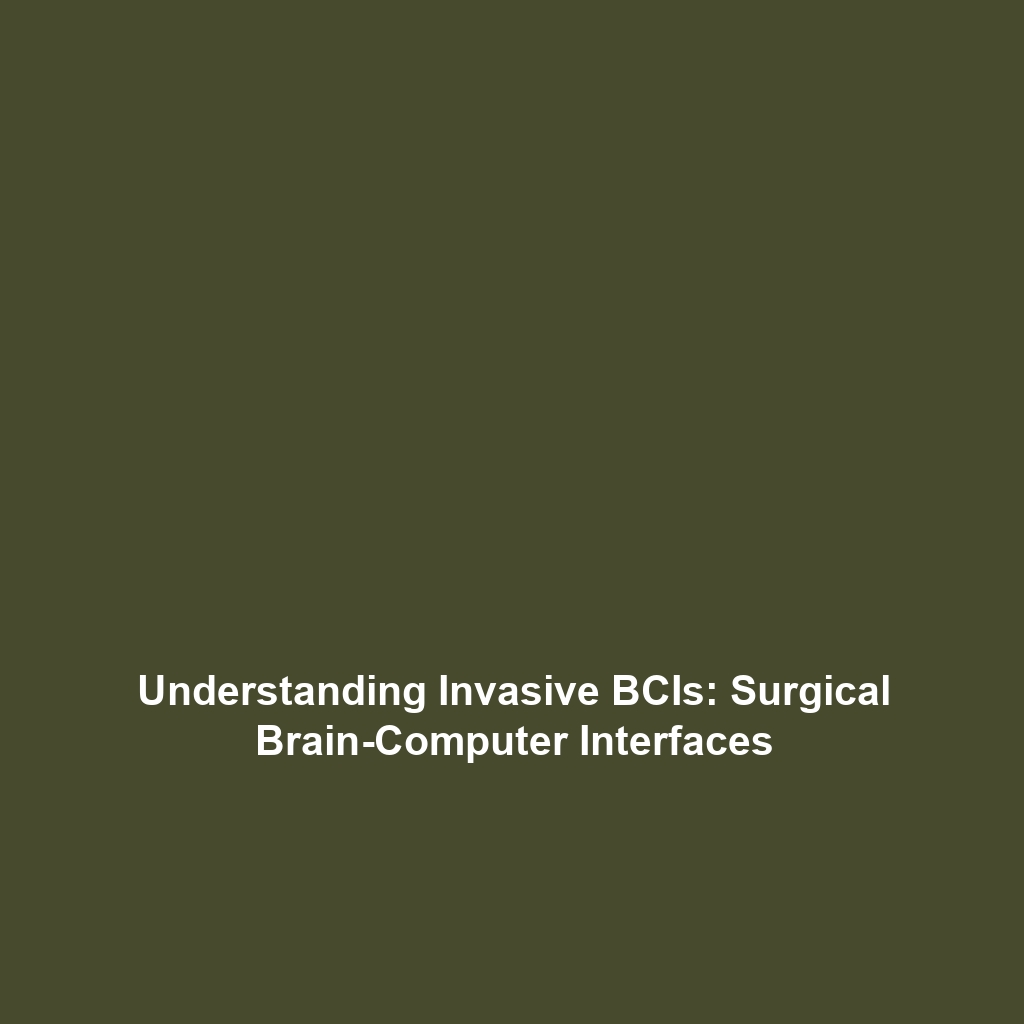Understanding Brain-Computer Interfaces (BCI)
Introduction
A Brain-Computer Interface (BCI) is a groundbreaking technology that creates a direct communication pathway between the brain and external devices. This innovative communication enables individuals to control computers, prosthetics, and other systems using neural signals, revolutionizing how we interact with machines. The significance of BCIs extends beyond mere convenience; they offer transformative potential for individuals with motor impairments, significantly improving their quality of life. In this article, we delve into the definition of BCI, its applications, challenges, current research, and future innovations within the broader category of Brain-Computer Interfaces.
Key Concepts
Definition and Mechanism
A BCI is defined as a system that translates brain activity into commands for external devices, bypassing traditional neuromuscular pathways. This technology relies on various methods for signal acquisition and processing, enabling real-time interactions with the connected device.
Components of a BCI System
- Signal Acquisition: Electrodes detect brain signals, typically through Electroencephalography (EEG) or invasive methods.
- Signal Processing: Neurofeedback algorithms interpret raw data and translate it into actionable commands.
- Device Output: The processed signals control the external device, whether it’s a computer cursor, robotic limb, or wheelchair.
Applications and Real-World Uses
Brain-Computer Interfaces have numerous applications across various fields. Notably:
Medical Rehabilitation
BCIs are pivotal in assisting paralyzed individuals regain control over their environment. For example, neuroprosthetic devices allow users to manage robotic arms effectively.
Communication Aids
Individuals with severe speech or movement disorders benefit from BCIs that translate brain signals into text or speech, thus enhancing their communication capabilities.
Gaming and Virtual Reality
BCIs offer immersive experiences in gaming, allowing players to interact with the game environment using thought alone, thus bridging the gap between human cognition and technology.
Current Challenges
Despite their significant potential, Brain-Computer Interfaces face several challenges:
- Data Accuracy: Ensuring accurate interpretation of neural signals remains complex.
- Security: Protecting user data from unauthorized access is paramount.
- Integration: Developing seamless integration with existing technologies can be technologically demanding.
- User Adaptation: Training users to effectively control BCIs requires time and patience.
Future Research and Innovations
The future of Brain-Computer Interfaces is promising, with ongoing research focusing on enhancing functionality and user experience. Innovations in the following areas are anticipated:
- Improved Algorithms: Advancements in artificial intelligence to refine signal processing and interpretation.
- Miniaturization: Development of smaller, less invasive devices for easier use.
- Wireless Technologies: Enhancements allowing untethered operation for increased mobility.
Conclusion
In summary, Brain-Computer Interfaces represent a remarkable intersection of neuroscience and technology, allowing direct communication between the brain and external devices. As BCI technology evolves, it holds the promise of significant advancements in medical rehabilitation, communication, and interactive entertainment. For those interested in exploring more about the innovations surrounding BCIs, consider diving deeper into our articles on medical rehabilitation technologies or the future of robotics in healthcare.
